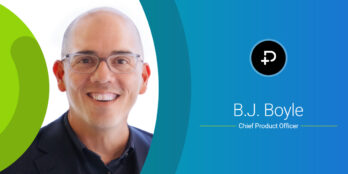
Innovation in Long-Term Care: Who’s Making Best in KLAS
 5 min
5 min
PointClickCare prides itself on moving the needle when it comes to long-term and post-acute care (LTPAC) innovation. An aging population and increasing chronic conditions is fueling rapid growth in LTPAC, a trend that is unlikely to change anytime soon. KLAS Research recognizes the LTPAC industry’s role in the broader healthcare ecosystem, which is why its annual Best in KLAS report evaluates software providers within long-term care, specifically. KLAS Research Director, Paul Hess offers insights into what it looks for and why PointClickCare stands out as Best in KLAS winner for the past two consecutive years in the Long-Term Care market segment.
PointClickCare: What is the main goal of KLAS Research when measuring LTPAC software vendors? What are your future plans for the post-acute market?
Paul: Central to the mission of KLAS, which is to improve the world’s healthcare, a primary facet ofKLAS is providing a platform for healthcare organizations to collectively share their feedback about vendors with the industry via the KLAS website and reports. The KLAS performance scores are made up of 16 ratings questions and four yes/no questions that we aggregate together for an overall score. They focus more on how well vendors take care of their customers than how much market share they have or money they make. That’s not to say that profitability and growth aren’t important insights for a healthcare organization that is evaluating vendors. For that reason, KLAS publishes reports on those insights too. However, the KLAS performance scores focus primarily on how customer centric vendors are with their overall design, implementation, training, development, and the ongoing support of their solutions.
KLAS has published performance ratings collected from home health and skilled nursing facilities for years. However, we know on a very intimate level the need to continually adapt to the ever-changing expansion and evolution of the healthcare technology landscape. We recognize the indispensable care that post-acute professionals provide and the challenges they are up against. We want to give them more of a voice in how their post-acute vendors perform and deliver more insights that will help them make informed decisions going forward. We are in the process of turning on data for hospice, personal care/private duty, social determinants of health, and EHR interoperability. We are also introducing insights on vendors in nurse scheduling (LTC), senior living (i.e., assisted living), Life Plan Communities, care coordination, transitions of care, referral management, palliative care, inpatient and outpatient rehab, acute care in the home (i.e., remote patient monitoring), and other areas of post-acute healthcare IT.
PointClickCare: What are the top expectations and/or needs post-acute providers have from their EHR systems – and what can vendors do to improve long-term viability? What differentiated PointClickCare in winning the Best in KLAS award for two consecutive years?
Paul: The expectations of EHR systems is not just about the system itself. They are about the partnership these vendors have with their customers. A good EHR system will go above and beyond the baseline expectations of providing an interface that helps clinicians provide better and more effective care. It also offers reports, analytics, customer support, and a product development team that relies heavily on customer input with an aggressive, realistic, forward-thinking roadmap. Similarly, to improve long-term viability, vendors must prioritize being a good partner for their customers, setting appropriate expectations and consistently exceeding them. Creating long term trust with customers means proactively looking out for them, providing proactive and responsive support.
In speaking with PointClickCare customers what stands out to us in the data is the tight score distribution. The odds of one PointClickCare customer having a similar positive experience as another PointClickCare customer is high, whereas other vendors have more mixed results. That is also what generally sets apart great vendors from good ones.
PointClickCare: In your opinion, what should LTPAC EHR vendors focus on in terms of interoperability?
Paul: Efforts should focus on connections that make it easy, low-to-no-cost, and ubiquitous. For example, it should require little-to-no effort on the part of the provider to enable, and the information that is shared should fit within the EHR solutions they are already using. We have a long way to go as an industry to not only push EHR interoperability forward but to make sure that the information that is shared between EHRs is relevant, timely, and can be easily found. As part of this, vendors should also focus on removing the potential barriers of governance and HIPAA concerns by using universal standards to the extent possible. National exchange solutions, such as the CommonWell network and the Carequality framework are becoming more widely used by acute and ambulatory providers and can serve as good options for post-acute as well. Facilitating connections to the local or regional HIE may also be valuable.
PointClickCare is proud to continuously innovate and support customers as they deliver the highest quality of care to residents, optimize operational performance, and improve outcomes.
February 11, 2021






